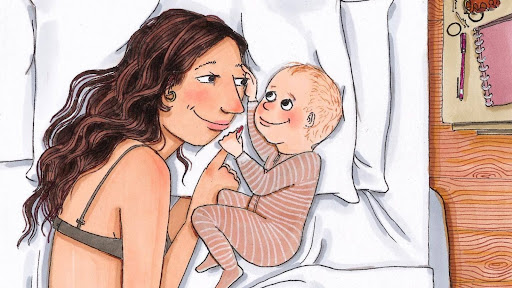Empowering Children and Teenagers about Consent
Children are the most vulnerable of all human beings because most of them do not know what is right or wrong and their decision-making ability mostly depends on others. They do things that elders tell them to do. And they will do it, sometimes willingly and sometimes out of fear, of being scolded or tagged as disobedient, disrespectful, or a ‘bad’ child. Adults should be mindful enough to understand that even small children have the right to make choices of their own. It is the responsibility of adults to teach them not to feel guilty and that it is okay to deny anything that they are not comfortable with.

Consent and Its Importance
Consent, in general, means positively agreeing with something, without the influence or pressure of external factors. Agreeing to something does not always mean replying with a positive affirmation. Consent can be both verbal and non-verbal. Signs of verbal consent can be saying ‘Yes’, or ‘I am open to try this’. It is the safest form. Non-verbal consent can be of different types, for example, nodding one’s head, smiling, maintaining an open body language like eye contact, uncrossed arms, etc. However, consent should never be assumed. If in doubt, it is wise to ask directly.
When a person agrees to something due to pressure, fear, or under threat, that is also not considered consent. If a person says, for example, ‘I am not sure’, ‘Umm..I..’, or just remains silent, these should also not be considered as signs of giving consent.
Be it a one-year-old or an eighty-year-old person, everyone has their own choices, preferences, and boundaries. And an individual needs to respect other’s boundaries. It will help in building trust and healthy relationships.
Consent for Toddlers and Children
More often than not, parents ignore the importance of obtaining consent from their children. Because they believe that whatever they do is for their child’s good, out of love and they know what is right, considering their age. It is also true that children are too young to understand such things.
However, using the language of consent is a slow but effective process to help children develop an idea about consent from an early age and help in building a groundwork for more open conversations. A few tips to introduce this idea to toddlers and children are
- Verbal and non-verbal cues (for toddlers): For young kids incapable of understanding a language and consent, it is important to involve them in the process of an act. For example, before directly changing their diapers, saying something like ‘Okay, I am going to change your diaper now’ along with maintaining eye contact. The goal here is to give the child a sense that they are being acknowledged.
- Asking for the child’s consent: It is advisable to ask a child if they are okay with something. This can be having their pictures or videos taken, tickling them to make them laugh, etc. Parents should try identifying uncomfortable body language as a sign of not giving consent.
- The art of empathy: Often a child throws tantrums like throwing stuff, pulling their hair, or crying if they do not get the things that they want that belong to others. Parents either resort to giving them that thing or scolding them. Instead, parents should try to explain that their behavior is not okay because it may hurt someone, mindful of the tone and language being spoken.
- Teaching correct names of body parts: Many children’s books about body parts are limited to the head, arms, and legs. It is important to teach the correct names of the private parts as well. If they do not know the names, they might not be able to communicate about a bad touch that they received.
- Teaching about good and bad touch: Helping children understand the difference between good and bad touch will help them identify inappropriate behavior and prevent abuse.
One of the core programs at Pratisandhi called the S.A.C.R.E.D. project is aimed at delivering sessions for children aged 7-12 years about consent, personal safety, etc. along with guiding parents to prevent abuse in children and ways to deal with it. To learn more about the program, click here.
- Saying NO: It is important to teach children to say NO, both verbally and through body language, to things that they are not comfortable with. The feeling of guilt or sadness is secondary compared to the feeling of discomfort.
It is important to remember that nothing should be forced upon children. If they are not comfortable discussing such topics, it is best to avoid them and find ways to bring the talk to the table.

Consent for Teenagers
Teenagers are explorers because they are curious about different things, changes in body parts, developing romantic feelings, etc. They want to know more but might be afraid to approach their elders and resort to other means that might not be appropriate.
A few tips to consider while discussing consent with them are:
- Normalizing talks: Setting up an environment where they feel approachable and non-judgemental to ask about topics such as consent, sex, and relationships, can be a good place to start.
- Misleading online representations: Online portrayal of consent can be inaccurate. Parents must help them to understand and identify real vs. myths. Instead of directly dismissing their knowledge, parents should try to listen to their ideas first and then clarify why their perception of something might not be correct.
CONCLUSION
Consent is not only limited to sexual relationships but it caters to the wider aspects of day-to-day lives. Instead of waiting for children to grow up so that they understand better, it is necessary to start from an early age. We help them by equipping them with essential life skills and ultimately building a society that thrives on trust, empathy, and respecting boundaries. It might take some time for young children to understand and value these things. But as mindful adults, imparting knowledge about these things should be considered as a form of responsibility. Children learn from their adults. So it is always better to educate oneself and set a good example first before we jump into advising children about the good and bad things.
Author

